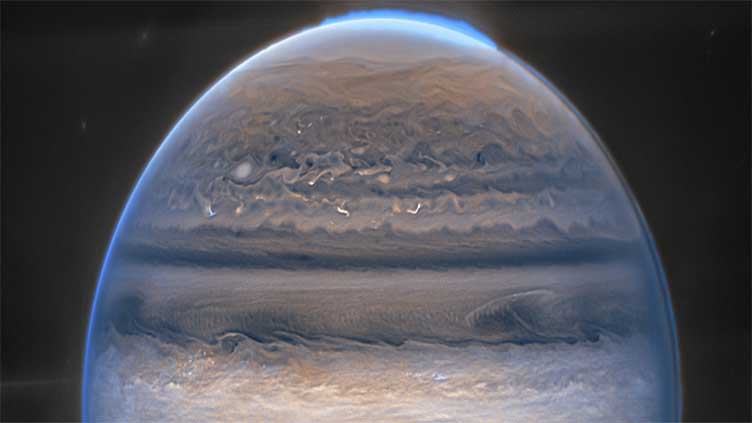
(WS News) – The planet Jupiter has no solid ground – no surface, like the grass or dirt you tread here on Earth. There’s nothing to walk on, and no place to land a spaceship.
But how can that be? If Jupiter doesn’t have a surface, what does it have? How can it hold together?
Even as a professor of physics who studies all kinds of unusual phenomena, I realize the concept of a world without a surface is difficult to fathom. Yet much about Jupiter remains a mystery, even as NASA’s robotic probe Juno begins its ninth year orbiting this strange planet.
Jupiter, the fifth planet from the Sun, is between Mars and Saturn. It’s the largest planet in the solar system, big enough for more than 1,000 Earths to fit inside, with room to spare.
While the four inner planets of the solar system – Mercury, Venus, Earth and Mars – are all made of solid, rocky material, Jupiter is a gas giant with a composition similar to the Sun; it’s a roiling, stormy, wildly turbulent ball of gas. Some places on Jupiter have winds of more than 400 mph (about 640 kilometers per hour), about three times faster than a Category 5 hurricane on Earth.
Start from the top of Earth’s atmosphere, go down about 60 miles (roughly 100 kilometers), and the air pressure continuously increases. Ultimately you hit Earth’s surface, either land or water.
As the layers of gas above you push down more and more, it’s like being at the bottom of the ocean – but instead of water, you’re surrounded by gas. The pressure becomes so intense that the human body would implode; you would be squashed.
Go down another 20,000 miles (about 32,000 kilometers), and the hydrogen becomes more like flowing liquid metal, a material so exotic that only recently, and with great difficulty, have scientists reproduced it in the laboratory. The atoms in this liquid metallic hydrogen are squeezed so tightly that its electrons are free to roam.
Ultimately, you’d reach the core of Jupiter. This is the central region of Jupiter’s interior, and not to be confused with a surface.
Scientists are still debating the exact nature of the core’s material. The most favored model: It’s not solid, like rock, but more like a hot, dense and possibly metallic mixture of liquid and solid.
The pressure at Jupiter’s core is so immense that it would be like 100 million Earth atmospheres pressing down on you – or two Empire State buildings on top of each square inch of your body.
Jupiter is a weird and forbidding place. But if Jupiter weren’t around, it’s possible human beings might not exist.
That’s because Jupiter acts as a shield for the inner planets of the solar system, including Earth. With its massive gravitational pull, Jupiter has altered the orbit of asteroids and comets for billions of years.
Maybe Jupiter gave an assist to our existence, but the planet itself is extraordinarily inhospitable to life – at least, life as we know it.
The same is not the case with a Jupiter moon, Europa, perhaps our best chance to find life elsewhere in the solar system.
Could something be living in Europa’s water? Scientists won’t know for a while. Because of Jupiter’s distance from Earth, the probe won’t arrive until April 2030.



